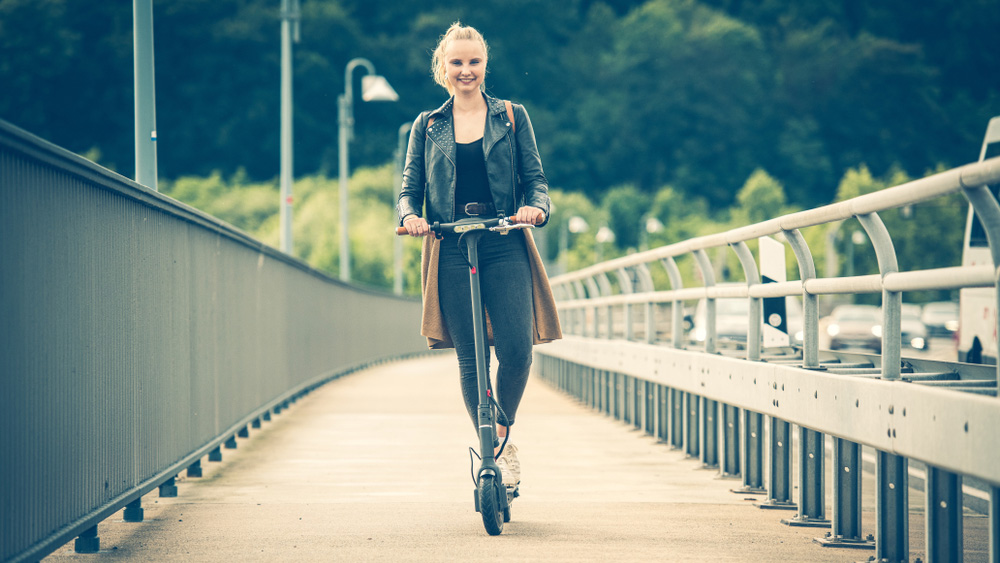Greener commutes are smoother in 2023 with these electric scooters
Learn how you can glide your way to work with these electric scooter tips

Getting a smooth ride out of an electric scooter should be a top priority when in the market for one. They may be the eco-friendly alternative to driving a car everywhere, but only a few are worth seriously considering for handling regular commuting duties.
Unless you live in a very flat city with pristine roads, riding a basic scooter is fun for about ten minutes. After that, you’ll either have been shaken so badly from the bumpy ride that your fillings are starting to come loose or find yourself walking that scooter up a hill that it can’t hope to conquer on its own.
So, getting an e-scooter is not enough. You need one of the best electric scooters that are built to handle poorly maintained roads and potholes as well as have the kind of power and braking performance for a comfortable trip to and from the office. Though you’ll have to spend a little more, that smooth ride is worth it. Sure, you can get a budget electric scooter, but those are better suited for shorter trips around the corner and, of course, in flatter areas.
With that in mind, let’s take a look at what makes for a smooth ride as well as some of the scooters that will get you to work safely and comfortably.
Not all tires are equal
- Pneumatic tires provide a smoother ride
- All else being equal, go for larger tires when possible
Tires are the only part of a scooter that makes contact with the ground – you know, “where the rubber meets the road” – so they're crucial for a smooth ride. And they vary quite a bit from scooter to scooter.
First, you need to consider the type of tire a scooter comes with. E-scooters come with either a type of pneumatic tire (inner tube or tubeless) or solid tire. While solid tires are great for avoiding flats, they don’t make for the best ride. Even one of our favorite e-scooters, the Unagi Model One, is a bumpy ride on less-than-perfect roads due to the use of solid tires – not to mention they’re only 7.5 inches.
Both pneumatic varieties can require more maintenance as they’re more susceptible to things like punctures, but they provide a much better ride. Since they’re filled with air, they’re able to absorb bumps on the road better, somewhat cushioning the scooter from cracks or potholes.
Get daily insight, inspiration and deals in your inbox
Sign up for breaking news, reviews, opinion, top tech deals, and more.
The TurboAnt V8, for example, comes with 9.3-inch inner-tube pneumatic tires, which do a surprisingly solid job when used on very poorly maintained roads.
It also helps that the tires are a bit larger. You’ll find that more expensive scooters, at least the ones that tout a smooth ride, will come with larger tires. The bigger the better as they’ll roll over potholes or debris without being quite as affected by it. Wider tires likewise will provide better traction.

Whether to get a scooter with a suspension system
- Not all scooters come with suspension systems
- Most that do come with a spring suspension system
While tires are the first line of defense against bumps and potholes, plenty of vibrations make their way past and into the scooter. That’s why a solid suspension system is important as it’s there specifically to absorb the rest of the shock.
Now, a lot of scooters don’t have a suspension system, instead relying on the cushioning of the tires. So, if you’re on a budget, you might have to make a compromise here. But, a lot of the better ones come with front or rear suspension, with off-roading or very premium scooters equipped with both.
The previously mentioned TurboAnt V8 comes with a rear suspension system while the pricier Apollo Air 2022 (review forthcoming) has a front dual fork suspension system, not to mention 10-inch wheels, to keep you gliding along. Front suspension is helpful with handling and traction while rear suspension keeps the scooter from skidding when hitting potholes, cracks, or even different types of surfaces.
While there are generally three types of suspension systems: spring, hydraulic, and rubber, you’ll only find hydraulic suspension on the most expensive or off-roading scooters. Most commuter models such as the ones mentioned above use a spring suspension, which does exactly as it sounds. It uses springs to offset or dampen those vibrations from the road so that you don’t get the full brunt of every bump or pothole.
Power and braking performance matter too
- A more powerful scooter will help with hilly commutes
- Disc or drum brakes are ideal
There are a few other things to keep in mind for a smooth ride. A more powerful scooter won’t struggle to stay at the speeds you need and can handle inclines so you don’t have to get off it and push. The Niu KQi3 Pro, for instance, comes with 700 watts of power and can handle 20 degree inclines – most can make it up 15 degrees at best – so you don’t have to worry if it can handle your commute.
The KQi3 Pro has a few other features that make riding it smoother. It’s comfortable to use thanks to the more spacious deck and wider handlebars. Also, just as important is braking. After all, you won’t be taking this on the highway and you most likely won’t be coasting along at 20 mph for the whole commute.
It has dual disc brakes that give quick and smooth braking and can even handle wet conditions. Though other scooters may not have as powerful brakes, make sure you get a scooter with brakes that are responsive and not too jerky when used. And, if a scooter only has a foot brake, it’s going to make for a frustrating trip. We suggest going for disc or drum brakes if possible.
In conclusion
These are all useful tips and we think you can’t go wrong with the scooters mentioned here. But, take your surroundings and use them into consideration. If you have a limited budget, then consider a scooter with pneumatic tires that doesn’t have a suspension system. Or, if your commute is through flat and well-maintained roads, then you have a lot more leeway. The Unagi model mentioned above will more than suffice. However, those ideal conditions don’t exist in most places so take a close look at the tires, suspension system, power, and brakes, whether you’re looking at the TurboAnt V8, Apollo Air 2022, or Niu KQi3.

James Holland loves checking out gadgets of all sorts, whether it's audio equipment, laptops, or vacuums (especially of the robot variety), and does so for a number of Future Publications including TechRadar, Top Ten Reviews, Homes & Gardens, and T3. He's built up an expertise for in-depth reviewing over the last four years. When he's not putting in the work on the latest tech, he loves to travel, play music, and eat questionable food.